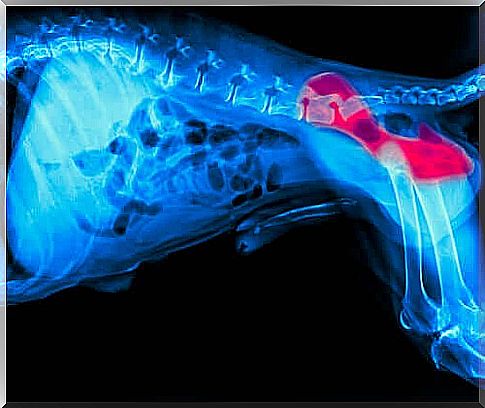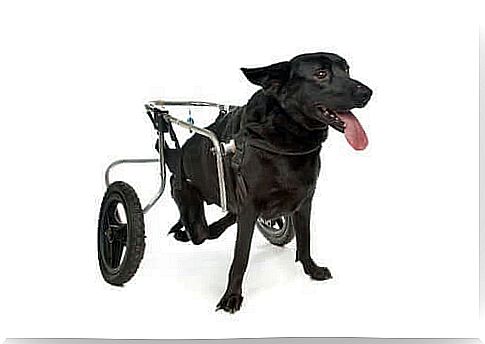Hip Dysplasia In Dogs And Treatment

You have certainly heard of hip dysplasia in dogs before. But do you really know what it is, what are its causes and which are the most suitable treatments? If you want to know more about this disease, you will find all the details in this article.
What is hip dysplasia in dogs?
We are talking about a disease that affects the hip and its joints. It occurs as a result of the defective union of the femoral head with its corresponding cavity in the hip. When this occurs, the tissues degrade and the dog begins to feel unwell when walking, which leads to a limp.
Hip dysplasia in dogs usually appears at 4 or 5 months of age and tends to worsen over time as the pelvis grows. There are different degrees of dysplasia, which according to the Orthopedic Foundation for Animals (OFA) vary in diagnosis and treatment.
Main causes
There is no doubt about the existence of a genetic factor underlying this pathology. There are, however, also others; for instance:
- Improper nutrition: lack of nutrients or excess protein.
- Overweight.
- Exercise or lack of exercise.
- Size: it is much more common in medium and large dogs.
- Specific dog breeds: there are certain breeds, such as the German Shepherd, the Neapolitan Mastiff or the Golden Retriever, which have a greater predisposition to suffer from this disease.

How is hip dysplasia diagnosed in dogs?
There are certain symptoms that can indicate hip dysplasia in dogs. Among these, the most frequent are an obvious lameness, difficulty getting up or even standing. If we observe any of these symptoms, we must contact the veterinarian, who will surely take an x-ray to confirm the pathology.
Treatments and cures
As already stated, there are different treatments depending on the degree of development of the disease. Typically, most treatments are aimed at reducing the effects or alleviating future symptoms.
In spite of everything, the key to the success of many treatments lies in an early diagnosis: it will be easier to treat the disease if it is detected as soon as possible.
In principle, we can talk about a preventive or conservative treatment, which includes canine physiotherapy, the use of wheelchairs or hip supports. These devices are equipped with mechanisms that stabilize the hip and at the same time prevent atrophy by stimulating the muscle activity of the affected joint area.

There is also a treatment that we could call medical or pharmacological, particularly suitable for elderly animals with advanced dysplasia and for which the risk of surgery is greater.
In these cases, anti-inflammatories are given to reduce pain. It is common to combine these drugs with chondroprotectors, food supplements that promote the hydration of the cartilage and delay the appearance of various symptoms.
Finally, surgical treatment can also be used, which involves various procedures designed to improve the affected area.
An equally valid option may be total joint replacement with a hip replacement. This option is definitive, but it is also the one with the highest cost.
Among the treatments that we can offer in case of hip dysplasia in dogs, the most important is to monitor the weight of the animal with a controlled diet in order to avoid overloading the joints in question.
We must also check physical activity, which must be moderate and regular over time. Thanks to these tips, we may not be able to eradicate the disease, but we will help our dogs to live better, despite everything.









